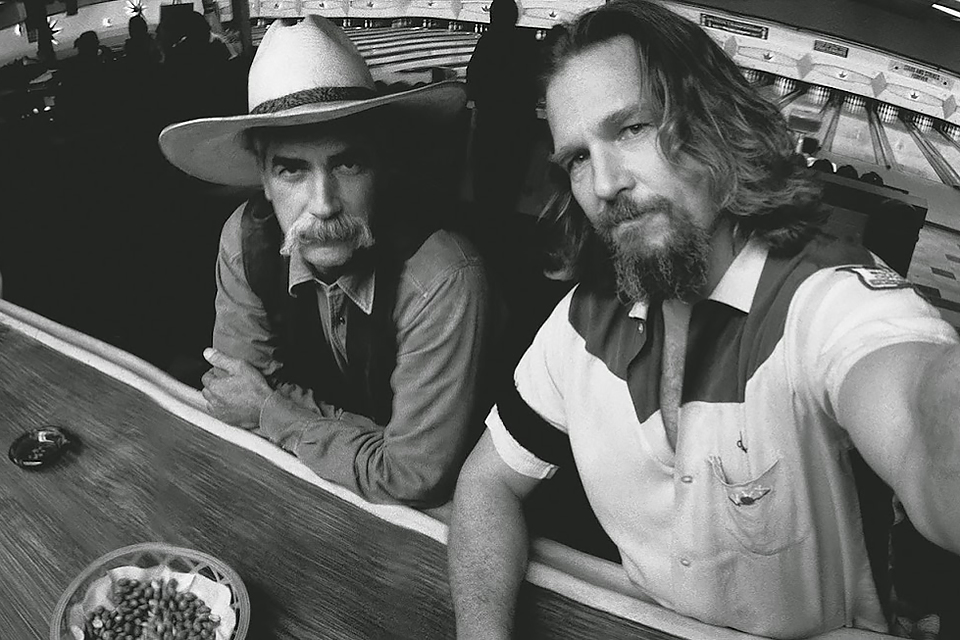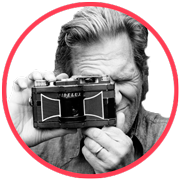
Expertise: Jeff Bridges’ Photography

Jeff Bridges began doing photography when he was a teenager. In the early 1980s his co-star from the film Starman,Karen Allen, suggested that he take images of youth and so he began documenting backstage. Since that time he uses Japanese Widelux F8 camera. According to Jeff, it’s a fancy camera – its viewfinder isn’t accurate, and there’s no manual focus. But he thinks that exactly what makes his photographs more human and honest.
“My photography is mainly focused on my work making movies, which I’ve done my whole life. I think I have a perspective that not many people have,” he said in the interview for The New York Times.
{ “img”: “/wp-content/uploads/2014/10/BridgesJ_01.jpg”, “alt”: “Expertise: Jeff Bridges’ Photography” },
{ “img”: “/wp-content/uploads/2014/10/BridgesJ_02.jpg”, “alt”: “Expertise: Jeff Bridges’ Photography” },
{ “img”: “/wp-content/uploads/2014/10/BridgesJ_03.jpg”, “alt”: “Expertise: Jeff Bridges’ Photography ” },
{ “img”: “/wp-content/uploads/2014/10/BridgesJ_04.jpg”, “alt”: “Expertise: Jeff Bridges’ Photography ” },
{ “img”: “/wp-content/uploads/2014/10/BridgesJ_05.jpg”, “alt”: “Expertise: Jeff Bridges’ Photography ” },
{ “img”: “/wp-content/uploads/2014/10/BridgesJ_06.jpg”, “alt”: “Expertise: Jeff Bridges’ Photography” }
In 2006 Bridges published a limited edition of his book Pictures with additional comments and text. The foreword was written by the film director Peter Bogdanovich. By the end of 2014 Chronicle Books publishing house will publish the second Bridges’ monograph, Jeff Bridges: Portraits.
In 2013 Bridges was honoured by the International Center of Photography with the special presentation on the 29th Annual Infinity Awards.

Photographers are often told to photograph what they know. Indeed if William Eggleston (the founding father of colour photography — Editor’s note) wasn’t told by his mentor to photograph the “ugly” in his hometown, the landscape of photography would be totally different today. So it is only natural that actor Jeff Bridges has photographed what he knows and that’s film sets. He is a talented actor in my view and has made many good choices when selecting interesting and varied scripts. His photography isn’t as solid, but there is a definite talent there.
{ “img”: “/wp-content/uploads/2014/10/BridgesJ_07.jpg”, “alt”: “Expertise: Jeff Bridges’ Photography” },
{ “img”: “/wp-content/uploads/2014/10/BridgesJ_08.jpg”, “alt”: “Expertise: Jeff Bridges’ Photography ” },
{ “img”: “/wp-content/uploads/2014/10/BridgesJ_09.jpg”, “alt”: “Expertise: Jeff Bridges’ Photography ” },
{ “img”: “/wp-content/uploads/2014/10/BridgesJ_10.jpg”, “alt”: “Expertise: Jeff Bridges’ Photography ” },
{ “img”: “/wp-content/uploads/2014/10/BridgesJ_11.jpg”, “alt”: “Expertise: Jeff Bridges’ Photography ” },
{ “img”: “/wp-content/uploads/2014/10/BridgesJ_12.jpg”, “alt”: “Expertise: Jeff Bridges’ Photography ” },
{ “img”: “/wp-content/uploads/2014/10/BridgesJ_13.jpg”, “alt”: “Expertise: Jeff Bridges’ Photography ” }
I’ve always wondered what it would be like to use this panoramic film camera to photograph people rather than landscapes and in some of his work it is very successful. Indeed because Bridges is photographing on film sets he has the advantage of all the lighting set ups for the celluloid cameras. Many of his shots look like film stills from another movie: one for example looks like something out of The Shining, another American Beauty, etc. Jeff Bridges also seems to have been a fan of the selfie a long time before the word entered the Oxford English Dictionary. His photographs are also great documents of other actors, including his father and brother, and film directors such as Francis Ford Coppola. You see them frozen in time behind the scenes of iconic stories. Indeed it is both poignant and sad to see Philip Seymour Hoffman on the set of The Big Lebowski in 1998.
His use of black and white creates a mesh between documentary and art photography. When you see the making of a motion picture in a sister documentary you see the huge divide between the mundane, grey reality of life and how that is transformed through the processes and editing of film making. Jeff Bridges’ photographic documents offer a halfway house so you see actors and directors in their down time or preparing for a scene but rather than a mundane reality his camera offers us these images through the alchemy of photographic film. I would like to see more of Bridges’ work especially blown up in an exhibition so I can appreciate the epic quality of his images all the more.
New and best




